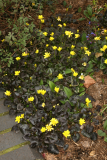Additional notes (click to expand)
Medicinal
Traditional Herbal Medicine Registration (THMR).
The following notes apply to the species of this plant.
In traditional herbal medicine:
Lesser celandine has been used for thousands of years in the treatment of haemorrhoids and ulcers[254]. It is not recommended for internal use because it contains several toxic components[254]. The whole plant, including the roots, is astringent[4, 165, 238]. It is harvested when flowering in March and April and dried for later use[4]. It is widely used as a remedy for piles and is considered almost a specific[4, 238]. An infusion can be taken internally or it can be made into an ointment and used externally[4, 238]. It is also applied externally to perineal damage after childbirth[238]. Some caution is advised because it can cause irritation to sensitive skins[244].
http://www.pfaf.org, https://pfaf.org/user/Plant.aspx?LatinName=Ranunculus+ficaria
Ranunculus ficaria 'Brazen Hussy'
Family: RANUNCULACEAEGenus: Ranunculus
Species: ficaria
Cultivar: 'Brazen Hussy'
Common names: Purple -leaved Lesser Celandine 'Brazen Hussy'
Distribution summary: N.Africa to W.Asia
Habit: Perennial
Hardiness: H5 - Hardy; cold winter
Garden status: Currently grown
Garden location: Plants of the World (C)
Flowering months: April, May
Reason for growing: Medicinal
.JPG)
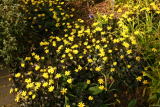
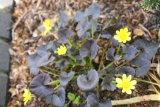

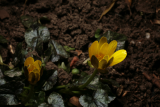
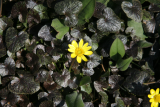


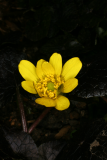
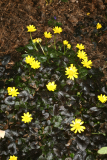
.JPG)
.JPG)
.JPG)
